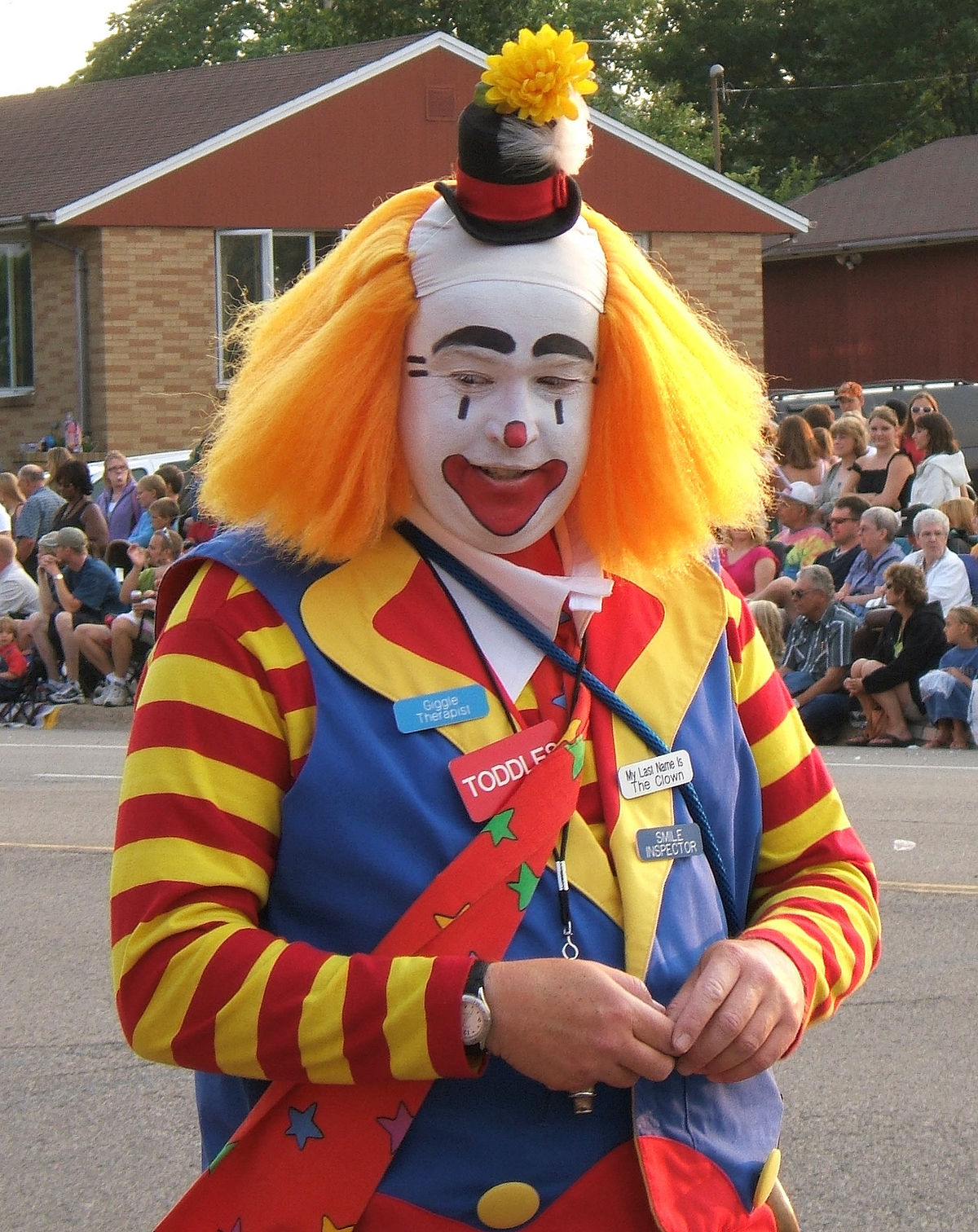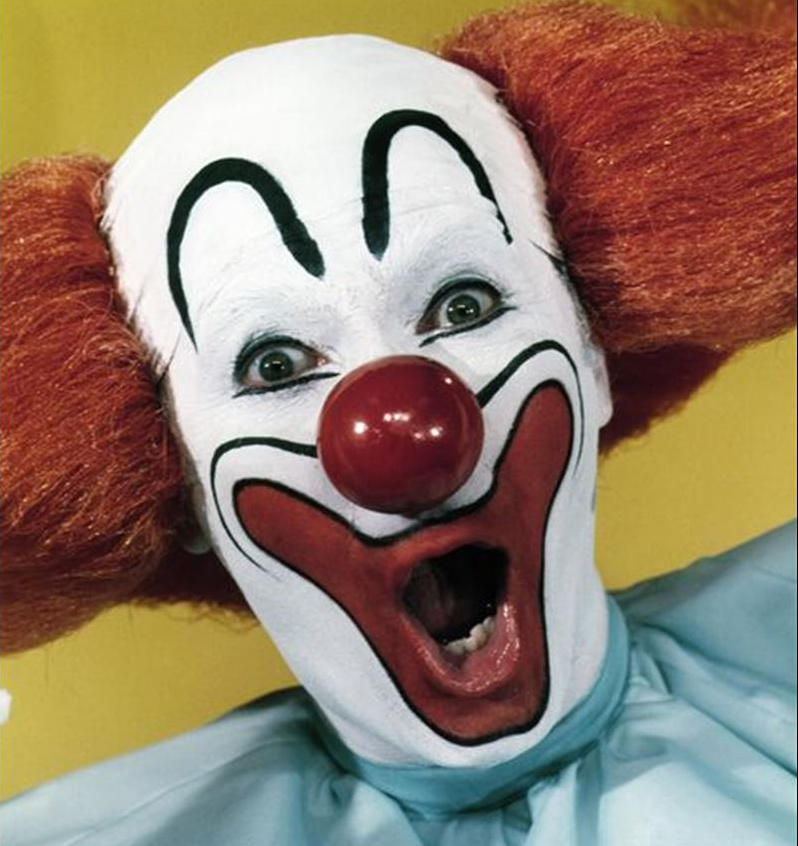Clown Killer Film - Exploring The Scary Side
There's something about the classic figure of the clown, that familiar comic character from the circus and pantomime, which really sticks with people.
These performers, known for their distinct makeup and often very wild costumes, their funny antics, and general buffoonery, typically exist to bring hearty laughter and joy. Yet, there is another side to this seemingly innocent entertainer, a darker shadow that, in some respects, has given rise to a whole different kind of story. This shift in how we see them, from a source of amusement to something rather unsettling, has certainly paved the way for the chilling idea of the "clown killer film," a genre where the laughter turns to screams, and the painted smile hides something far more sinister.
The very essence of what makes a clown a source of delight – their exaggerated features and unpredictable movements – can, you know, easily be twisted into something quite unnerving. This transformation of the familiar into the frightening is, apparently, a powerful ingredient for creating stories that send shivers down one's spine, especially when we talk about the unsettling premise of a "clown killer film." It's almost as if the inherent absurdity of the character provides a perfect canvas for terror, making the unexpected violence all the more impactful.
Table of Contents
- What Makes a Clown a Clown?
- From Farmer to Funny Man: The Origins of the Clown Killer Film Trope
- The Mask They Wear: How Makeup Fuels the Clown Killer Film Idea
- Why Do Clowns Turn Terrifying?
- The Cursed Suit and the Clown Killer Film Narrative
- Not Just a Joker: Understanding the Clown Killer Film Persona
- The Ancient Roots of the Clown's Dual Nature
- Exploring the Fear Factor in Clown Killer Films
What Makes a Clown a Clown?
A clown, as we generally know, is a kind of entertainer, a performance artist really, who performs physical comedy and stunts to amuse people. They are often recognized by their very distinctive makeup and costumes, their ludicrous antics, and a good deal of buffoonery, all designed to make people laugh heartily. The very idea of a clown, you know, is supposed to be about fun and lightheartedness, a break from the everyday seriousness of life. Yet, for some, this very image has become something quite different, something that inspires a sense of dread rather than mirth, leading to unsettling thoughts about a "clown killer film." It’s a curious twist, how a symbol of joy can be so effectively flipped on its head to become a symbol of fear, particularly when one considers the surprising origins of the word itself.
From Farmer to Funny Man: The Origins of the Clown Killer Film Trope
It's interesting to consider that the actual meaning of the word "clown" has roots in something as simple as "farmer" or "countryman." This original sense of a rustic, perhaps a bit awkward, individual seems a long way from the elaborate performers we see today, or for that matter, the chilling figures in a "clown killer film." The transformation of this word, appearing in the 16th century to refer to a theatrical buffoon, shows how characters evolve over time. This evolution from a humble, rural figure to a stage persona, and then, rather surprisingly, to a terrifying presence in popular culture, really highlights how perceptions can shift. You know, it’s a journey from innocence to something, well, genuinely unsettling, providing a strange historical backdrop to the scary clown we sometimes see on screen.
The Mask They Wear: How Makeup Fuels the Clown Killer Film Idea
One of the most defining characteristics of a clown, of course, is their makeup. They usually wear grease paint that completely hides their real face, often along with a large wig. This act of concealing one's true identity, you see, is a powerful tool in storytelling, especially when we talk about a "clown killer film." When a face is hidden, the person underneath becomes an enigma, a blank slate onto which our deepest fears can be projected. The painted smile can seem fixed and unnatural, a permanent expression that doesn't change even when the actions of the character are anything but funny. This lack of genuine emotion, or the inability to read true feelings, can be very disorienting, and frankly, a bit scary, contributing to the unsettling nature of these characters when they are portrayed as dangerous.
Why Do Clowns Turn Terrifying?
The very elements that make clowns amusing – their exaggerated features, their often-unpredictable behavior, and their bright, almost overwhelming appearance – can, you know, also be the very things that make them deeply unsettling. There's a fine line between the ridiculous and the truly horrifying, and clowns seem to walk it with a strange sort of grace. When the laughter stops, or when the intent behind the painted smile seems to shift, the familiar can quickly become a source of profound unease. This duality is, in some respects, what makes them such compelling figures for horror narratives, particularly in the context of a "clown killer film," where the subversion of expectations is key to generating fear.
The Cursed Suit and the Clown Killer Film Narrative
Consider the idea of a loving father finding a clown suit for his son's birthday party, only to realize that it's cursed. This specific detail, you know, directly from our source material, really highlights how easily the innocent can be twisted into the sinister. A costume, something meant for fun and celebration, becoming a vessel for evil is a particularly potent image for a "clown killer film." It suggests that the horror isn't just about a person choosing to be bad, but about something external, something ancient and malevolent, taking over. The suit itself becomes a character, an entity that transforms the wearer, stripping away their humanity and replacing it with something truly frightening. This kind of supernatural element adds a whole new layer of dread to the concept.
Not Just a Joker: Understanding the Clown Killer Film Persona
It is interesting to note the distinction between a "clown" and a "joker." While "clown" often carries a slightly negative connotation, suggesting foolishness or even being a bit of an idiot, "joker" can also mean "ace" or someone who loves to joke around. This difference in meaning, you see, is quite important when thinking about the persona of a "clown killer film" character. A joker, as a "mastermind" type of criminal, might fit a more cunning, intelligent villain. But a "clown" as a killer, someone whose very identity is tied to buffoonery, can be far more unsettling. It’s like the idea of a simpleton turning truly malicious, which, you know, subverts expectations in a way that can be deeply disturbing. When the fool becomes dangerous, the world feels just a little bit more off-kilter.
The Ancient Roots of the Clown's Dual Nature
Clowns, whether dressed up for a birthday party or performing in an elaborate circus act, are, you know, a reminder of the colorful jesters of history and their lasting impact on the world. Their ancient roots go back a very long way, suggesting that the human fascination with these figures, with their ability to entertain and sometimes even unsettle, is nothing new. The very origin of the clown, distinct from court jesters, is initially tied to social and religious contexts, particularly in ancient Egypt. This deep, historical connection to something beyond mere entertainment hints at a more profound, even primal, aspect of their appeal. It's almost as if they tap into something very old in the human psyche, something that can be both amusing and, frankly, a bit terrifying.
Jesters and Clowns: A Shared History in Clown Killer Film Lore
While court jesters have been performing in places like China since 1818 B.C., the term "clown" itself appeared in the 16th century, originally referring to a theatrical buffoon. The image of these early clowns wasn't necessarily as specialized as the "joker" archetype, but rather a general character role. This historical lineage, you know, shows a long tradition of performers who use humor and physical comedy. However, the connection to these ancient figures also provides a rich background for the unsettling nature of a "clown killer film." The idea that a character with such a long, often playful, history could be twisted into something so dark adds a layer of disturbing irony. It's like taking something deeply ingrained in our cultural memory and making it fundamentally wrong, which is, in some respects, a very powerful way to create fear.
Exploring the Fear Factor in Clown Killer Films
The core appeal of a "clown killer film," when you think about it, lies in its ability to take something familiar and turn it on its head. The traditional purpose of a clown is to induce hearty laughter, to bring joy and lightheartedness. But when that expectation is shattered, when the painted smile becomes a mask of menace, the effect is profoundly disturbing. This subversion of the expected, the transformation of a figure of fun into a harbinger of dread, plays on our innate discomfort with things that are "off" or out of place. It’s like seeing a child’s toy suddenly come to life with malicious intent; the innocence that was once there makes the evil seem all the more shocking and, frankly, very terrifying.
The ambiguity inherent in a clown's appearance, with their hidden faces and exaggerated expressions, means they can be perceived in many ways. This lack of a clear, readable human face, you know, makes it easier for our imaginations to fill in the blanks with whatever scares us most. The bright colors and playful movements, when combined with violent actions, create a truly jarring contrast that sticks with you long after the film is over. It's a testament to the power of taking a cultural icon and twisting its meaning, creating a lasting impression that is both memorable and, quite honestly, a bit chilling, particularly when considering the impact of a good "clown killer film" on an audience's psyche.

Clown | Definition, History, & Facts | Britannica

Pagliaccio - Wikipedia

The Different Types of Clowns - TriXtan Entertainment inc.